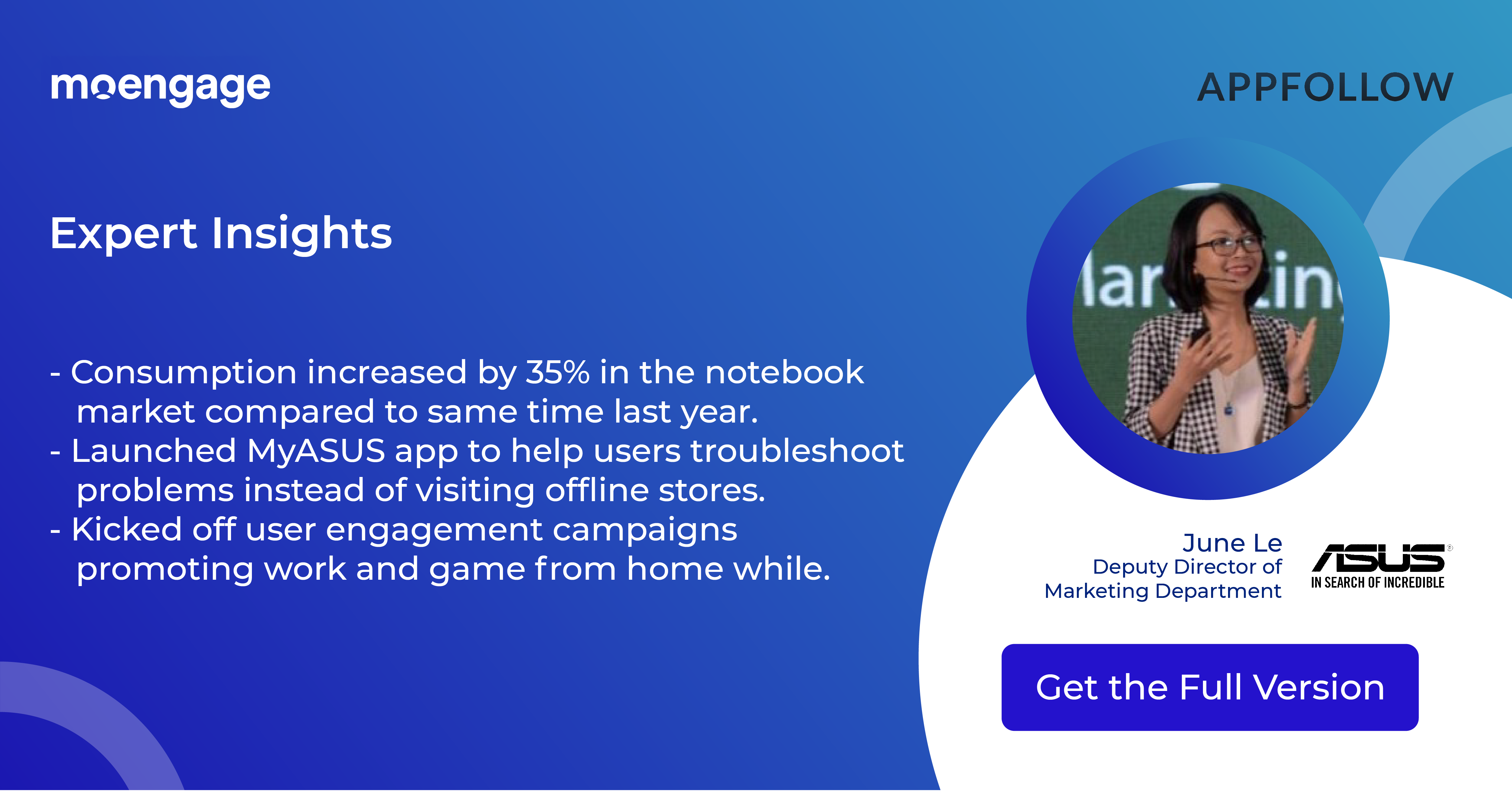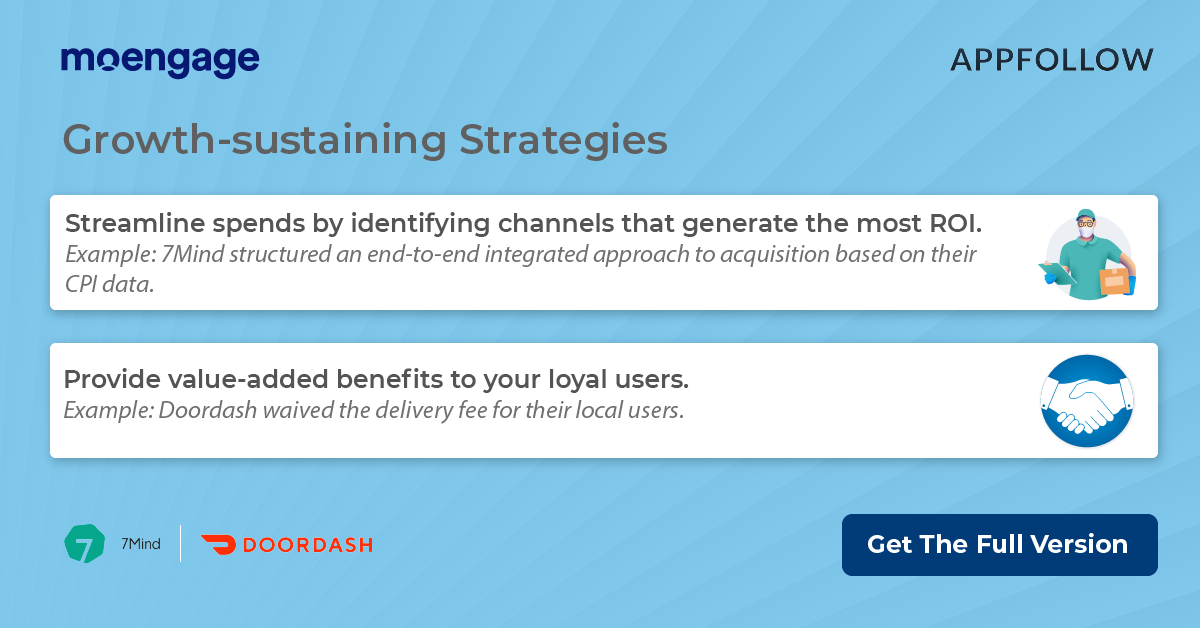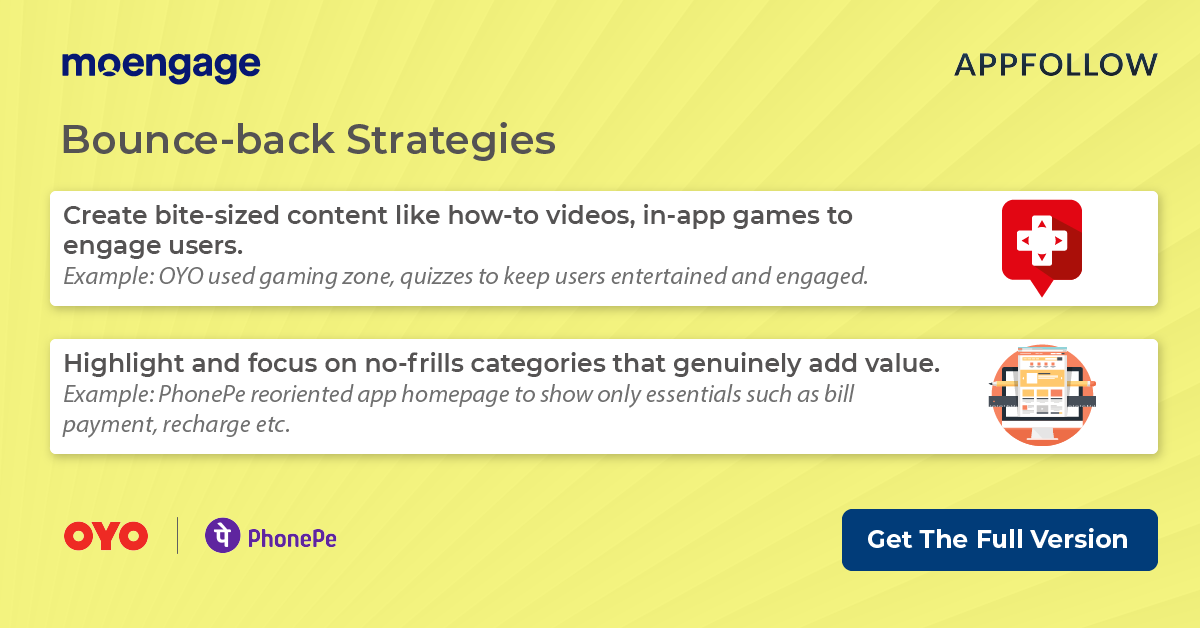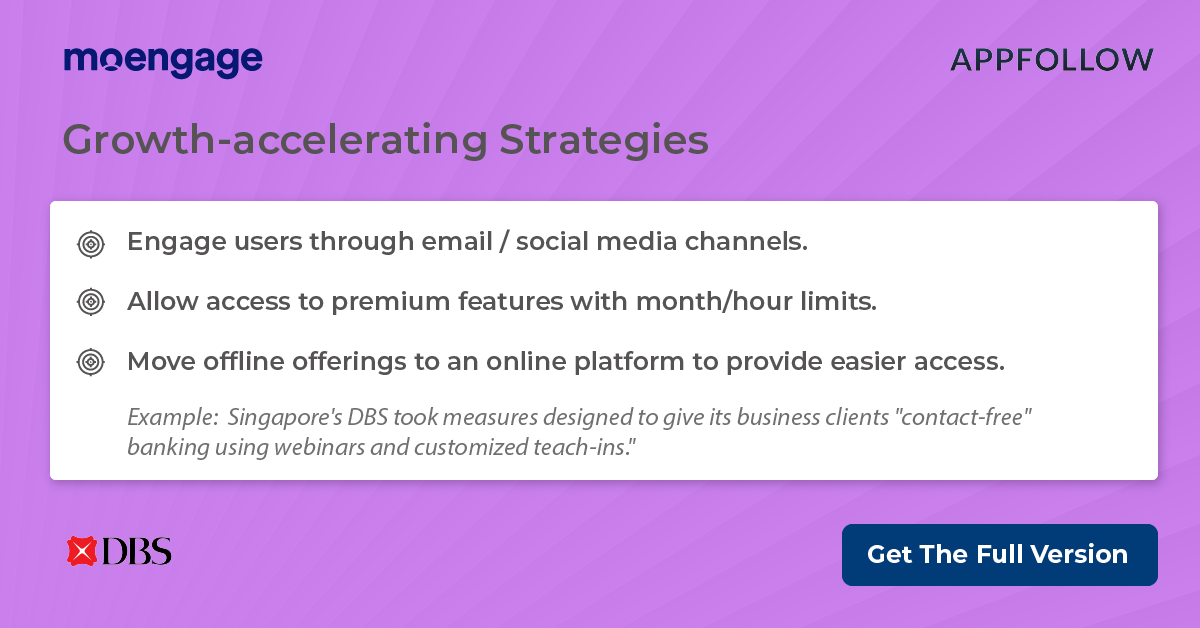3 Helpful Customer Engagement Strategies to Navigate Your business during a Crisis
The COVID-19 pandemic has had severe implications for businesses across verticals and regions, something one could not have fathomed. While the world still comes to terms with the “new normal”, businesses worldwide are learning how to deal with this ‘Black Swan’ event and trying to connect to their customers and even realign their strategies. The mobile app economy
Although businesses across regions are slowly opening up their operations, consumers are still hesitant to step out and are uncertain. The mobile app economy is another matter, as mobile app session times and installs saw dramatic increases and decreases varying across industries. A global playbook published by MoEngage on how brands can rebuild and essentially bounce back to pre-crisis numbers, sustain or accelerate their growth. Quite recently, a COVID-19 Business Impact Report was launched covering the business impact of the pandemic on 12 industries across 5 regions, with a vision to offer data-backed quadrant mapping for various industries to understand what growth trajectory they’re on.

What’s your App Adoption Trend: Growth, Slowdown, or Unchanged?
Although businesses across regions are slowly opening up their operations, consumers are still hesitant to step out and are uncertain.
To understand this better, we spoke to many industry experts and leaders from around the world on how businesses might fare with lockdown relaxation and included a Path Assessment Checklist which consists of few questions that will help a business map the right path — growth path, slowdown path or unchanged path.
Answering these questions and depending on the answers leads to the 3 Engagement Frameworks providing brands 3 paths: –
- Growth Sustaining (for verticals observing unprecedented growth during crisis, viz. Entertainment)- plan ahead by providing actionable strategies to define engagement flows, revisit and rework value propositions, curate relevant content, streamline marketing communications and re-evaluate spend. The key here is to streamline your approach by identifying channels that generate the most ROI and continue scaling up.

- Bounce-back (for verticals observing unexpected growth viz. Travel & Hospitality)- Once you clearly understand which track defines your brand, the first step is to know how you can retain users and intensify your customer journey from the ground up. As a brand, you have invested in paid acquisition channels earlier so use that data to pursue paid activities. Pick up paid channels that offered almost 50-100% ROI.

- Growth Accelerating (for verticals with neither surge in growth nor heavy decline viz. BFSI)
Strike a Balance between Paid Acquisition and Organic Channels and allow limited access to Premium Features- once the user realizes the value of the features, they’d be willing to purchase the paid subscription. This also eventually results in stronger community relations.

Note: If you prefer watching a video explaining customer-centric Marketing in the New Normal: Strategies and Tips to Succeed with Jimmy Brings, you can check this out:
Conclusion
It is imperative for businesses to understand the changed Consumer Behaviour and accordingly realign and restructure their strategies for the future. A key focus area for any business while handling a crisis should be – engaging and retaining existing customers. Once you have engagement and retention strategies nailed down, you can proceed with user acquisition.
What Is WooCommerce Product Slider and Why Your Store Needs It
Why Do Product Images Matter So Much in Online Stores? When someone visits an online store the…
0 Comments9 Minutes
How to Streamline Your Customers’ Shopping Experience?
The goal for any online store is to make shopping as smooth as possible. When visitors move…
0 Comments8 Minutes
Strengthening Brand-Customer Relationships Through Gamified Loyalty Programs
Creating lasting connections with customers has become increasingly vital as the marketplace grows…
0 Comments6 Minutes
How to Use SEO and SEA Together in Search Engine Marketing
In digital marketing, search engine marketing (SEM) plays a critical role in improving online…
0 Comments10 Minutes
Content Marketing Growth Hacks: Real Shortcuts to Drive Traffic
Are you still lagging in content marketing? Sticking to these old strategies seems…
0 Comments10 Minutes
How to Build a Strong Local Following Using Social Media Marketing
In the days of likes, shares, and stories, local businesses have a golden opportunity to create…
0 Comments9 Minutes
Why WooCommerce is the Best Choice for Your Online Store?
WooCommerce stands out as a top option for anyone looking to build an online store. This platform…
0 Comments8 Minutes
How to Use AI-Powered SEO Tools for WordPress eCommerce
SEO is a critical factor in the success of any e-commerce WordPress store. As competition…
0 Comments11 Minutes








